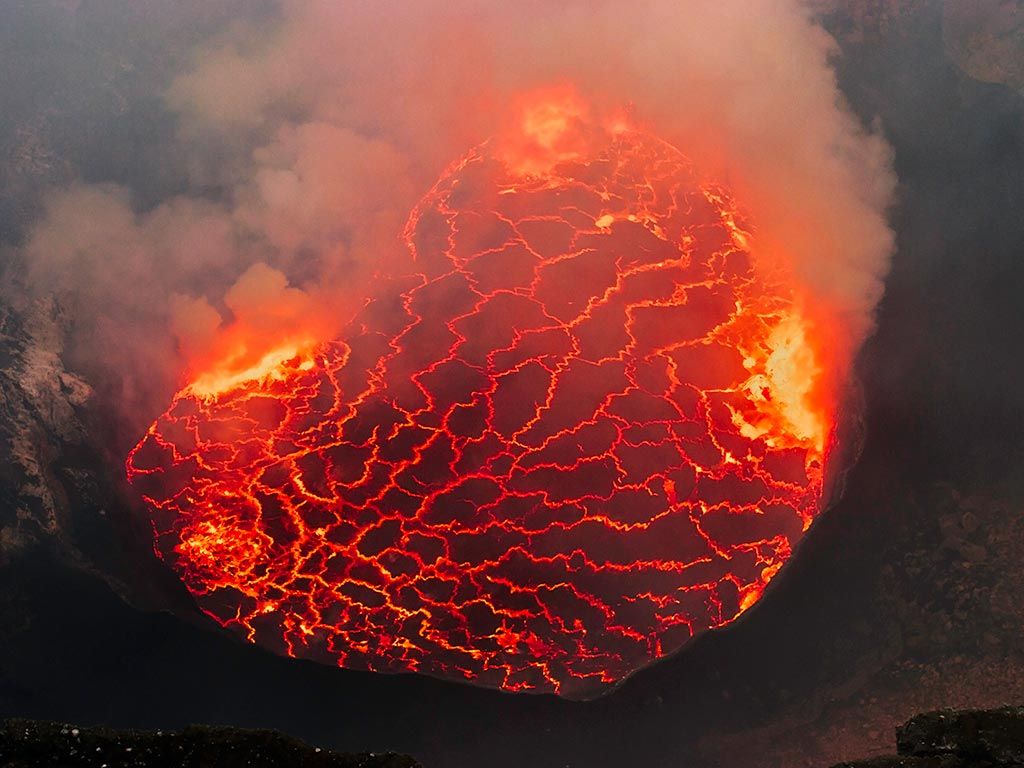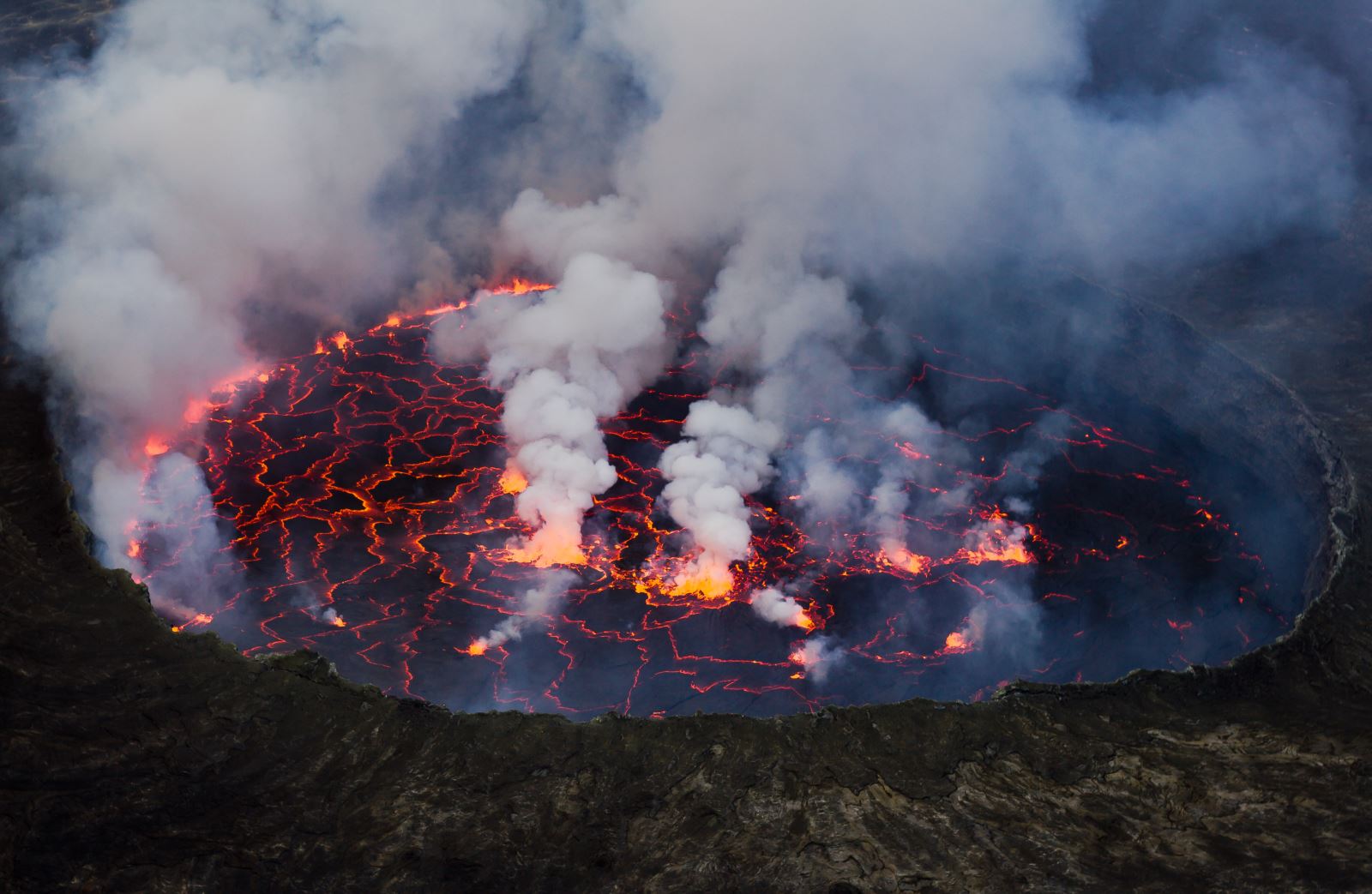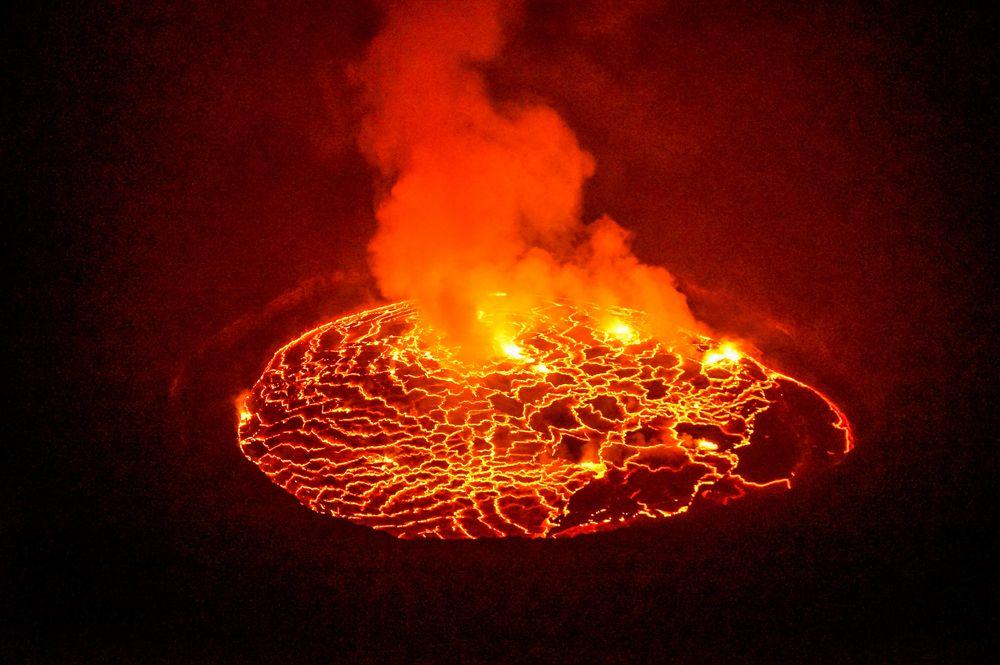The lava lake at Mount Nyiragongo, which is located inside Virunga National Park, approximately twelve miles north of the town of Goma – the Democratic Republic of the Congo (DRC), is generally considered to be largest lava lake in recent history.
Its depth varies depending upon the occurrence of volcanic eruptions but is believed to have reached a maximum depth of 10,660 ft in 1977 following a massive eruption. More recently, however, the lava lake at Mount Nyiragongo has a recorded depth of approximately 8,900 ft.

Mount Nyiragongo is an active stratovolcano that is part of the Virunga Mountains, which is part of the larger Albertine Rift that encompasses parts of the Democratic Republic of the Congo, Uganda, Rwanda, Burundi, and Tanzania.

As an active volcano that contains the world's largest permanent lava lake, Mount Nyiragongo has become an unique destination for travelers and hikers. The volcano is characterized by its symmetrical cone and large pool of reddish colored liquid lava.

Classified as a stratovolcano, Mount Nyiragongo is composed of various layers of solidified lava and other volcanic materials such as ash, tephra, and pumice. The African volcano rises to a height of 11,380 ft and its major crater measures more than a mile wide and contains a pair of structures known as lava benches.
According to worldatlas











